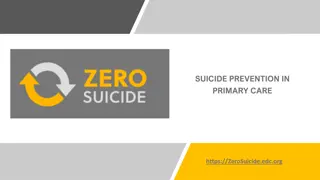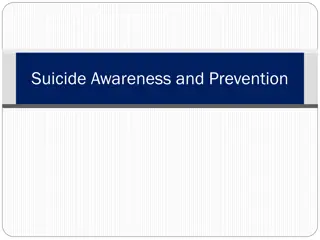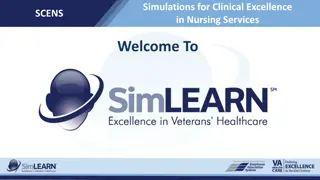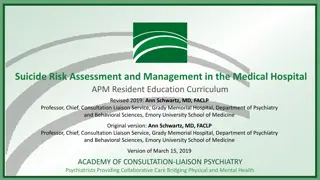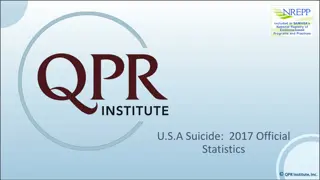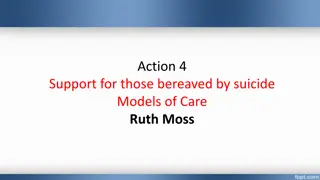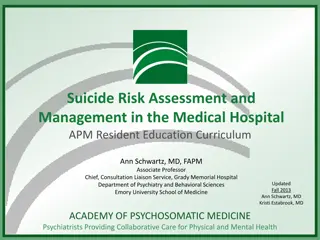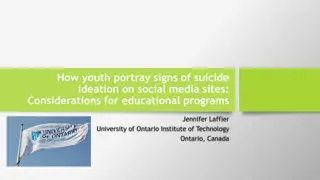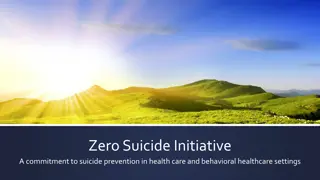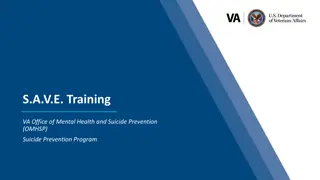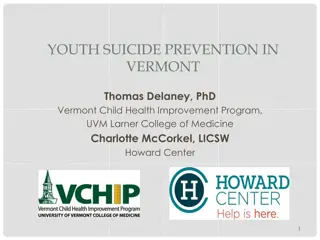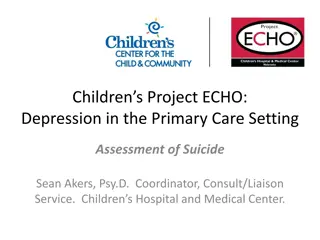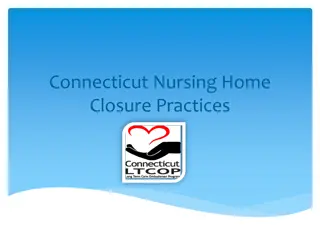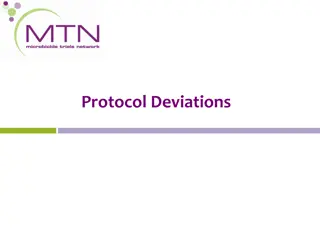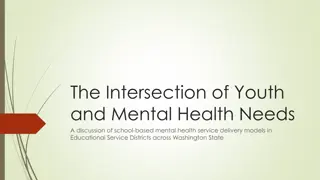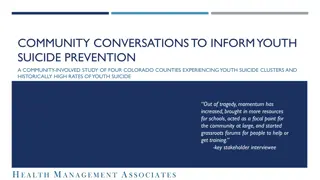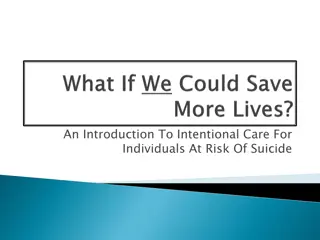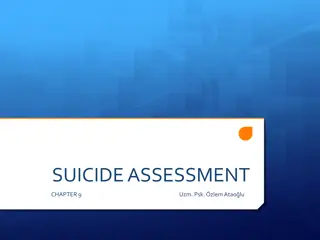Clinical Excellence in Nursing: Suicide Risk Assessment and Protocol Training
Welcome to SCENS where simulations focus on recognizing and managing suicidal ideation in nursing services. This scenario highlights the importance of suicide risk assessment protocols, effective communication with patients, and key warning signs to watch for. The background information sheds light on the concerning statistics related to veteran suicide rates. Learning objectives include recognizing signs of suicidal ideation, performing risk assessments, and implementing necessary protocols. The content emphasizes the need for sensitive handling of such cases due to their emotional impact on both patients and healthcare providers.
Download Presentation

Please find below an Image/Link to download the presentation.
The content on the website is provided AS IS for your information and personal use only. It may not be sold, licensed, or shared on other websites without obtaining consent from the author. Download presentation by click this link. If you encounter any issues during the download, it is possible that the publisher has removed the file from their server.
E N D
Presentation Transcript
Simulations for Clinical Excellence in Nursing Services SCENS Welcome To
Suicidal: Outpatient SCENS
Disclaimer SCENS The sensitivity of the content discussed during this scenario may trigger emotional or physiological responses Please inform the faculty if this is uncomfortable for you
Learning Objectives SCENS 1. Recognize signs of suicidal ideation 2. Perform a suicide risk assessment 3. Implement suicide risk protocol 4. Communicate effectively with the suicidal patient
Why? SCENS #1 clinical priority of the Secretary of the VA VA/DoD Clinical Practice Guideline for Assessment and Management for Patients at Risk for Suicide VHA Directive 1071: Mandatory Suicide Risk and Intervention Training for VHA Health Care Providers The Joint Commission: 2016 National Patient Safety Goals Recovery Engagement and Coordination for Health- Veterans Enhanced Treatment (REACH VET)
Background SCENS VA analysis for Veteran suicide Average of 20 Veteran deaths per day by suicide 18% of all deaths from suicide in the U.S. 65% were 50 or older Risk for suicide 21% greater risk for Veterans compared to civilian adults Veteran male rate increased by 30.5% Veteran female rate increased by 85.2% 6
Risk Factors SCENS Current suicidal ideation Previous suicide attempts Alcohol or substance abuse Recent losses Family history of suicide Health problems Age, gender, race
Warning Signs SCENS Low self-esteem Depression Anxiety Deteriorating physical appearance Withdrawing from friends and family Loss of interest in things one used to care about Hopelessness Reckless behavior Giving away prized possessions Putting affairs in order Seeking access to means of harming oneself
Suicide Risk Assessment SCENS Look for warning signs Ask specific questions Feeling hopeless? If yes Had thoughts about taking his/her life? If yess When did he/she have the thoughts Does he/she have a plan?
Priority Interventions SCENS Call for assistance Establish safety as a priority Suicide risk assessment Inform the patient of responsibilities of healthcare provider for preventing suicide Ask the patient if he/she has access to weapons Communicate the plan of care Do not leave the patient alone 10
Facility-Specific SCENS Protocols Resources available 24/7 Veterans Crisis Line o1-800-273-TALK Suicide intervention responders/counselors Mental health services for women TeleMental Health services Mobile app
Summary SCENS 1. Discussed signs of suicidal ideation 2. Demonstrated a suicide risk assessment 3. Reviewed implement suicide risk protocol 4. Discussed communicating effectively with the suicidal patient 12
Questions SCENS
Suicidal: Outpatient Scenario SCENS Franklin Wright Twenty four (24) year old male presents with complaints of feeling fatigued and loss of enjoyment of activities he previously enjoyed. He completed two (2) tours to Afghanistan six (6) months ago. He has been estranged from his family since he joined the military against their wishes. His girlfriend broke up with him while he was deployed. He has been drinking fifth of whiskey a day. Past Medical History: None Past Surgical History: None Medications: None Allergies: None


